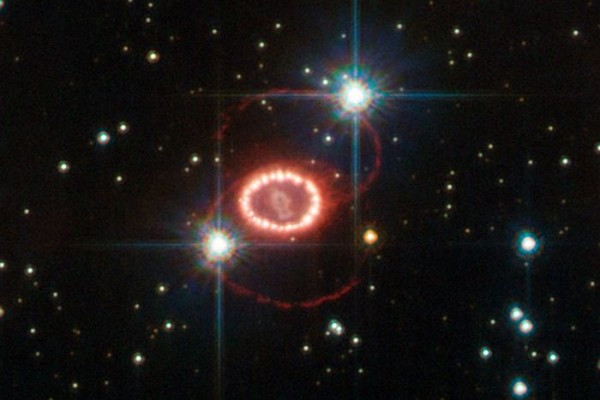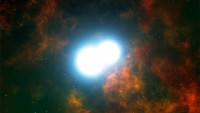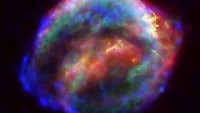Lopsided Stellar Explosion to Solve Other Supernova Mysteries
| Marco Foronda | | May 13, 2015 05:19 AM EDT |
(Photo : Stuart Gary (NASA/ESA/Hubble))
New research on a recently exploded star indicated that it underwent a "lopsided" blast, a feature that could help solve other supernova mysteries, according to a study published in the Science journal.
The explosion of the star called Supernova 1987A is characterized by a lopsided or asymmetrical blast, where the stellar core flew off in one direction and most of the debris in another.
Like Us on Facebook
Using NASA's Nuclear Spectroscopic Telescope Array (NuSTAR), scientists were able to study the star, whose explosion was observed in 1987.
"Stars are spherical objects, but apparently the process by which they die causes their cores to be turbulent, boiling and sloshing around in the seconds before their demise," lead researcher and University of California in Berkeley's Steve Boggs said.
The sloshing of stellar cores is what causes asymmetrical explosions, Boggs added.
In addition, the team found more about titanium-44, a radioactive titanium, which is a product of a core-collapse supernova or type II star explosion.
For one, it is unstable. It also emits gamma rays at a certain energy level upon decay, when it also transform into calcium, Fiona Harrison of Caltech laboratory said.
The team also looked at Cassiopeia A's titanium-44 profile to track signs of lopsided explosions. Findings on this supernova, albeit not very definitive, supported their theory.
From the new observations, they gathered that lopsided explosions produce type II supernovae.
SN 1987A exploded in the nearby galaxy called Large Magellanic Cloud, which is 168,000 light-years away from Earth. The light from the supernova arrived on Earth and was detected in 1987. It has been studied since then.
The discovery also led astronomers to find neutrinos in other astronomical source aside from our sun.
TagsNASA, Supernova, Star, University of California, Steve Boggs, caltech, NuStar, Space
©2015 Chinatopix All rights reserved. Do not reproduce without permission
EDITOR'S PICKS
-

Did the Trump administration just announce plans for a trade war with ‘hostile’ China and Russia?
-

US Senate passes Taiwan travel bill slammed by China
-

As Yan Sihong’s family grieves, here are other Chinese students who went missing abroad. Some have never been found
-

Beijing blasts Western critics who ‘smear China’ with the term sharp power
-

China Envoy Seeks to Defuse Tensions With U.S. as a Trade War Brews
-

Singapore's Deputy PM Provides Bitcoin Vote of Confidence Amid China's Blanket Bans
-

China warns investors over risks in overseas virtual currency trading
-

Chinese government most trustworthy: survey
-

Kashima Antlers On Course For Back-To-Back Titles
MOST POPULAR
LATEST NEWS
Zhou Yongkang: China's Former Security Chief Sentenced to Life in Prison

China's former Chief of the Ministry of Public Security, Zhou Yongkang, has been given a life sentence after he was found guilty of abusing his office, bribery and deliberately ... Full Article
TRENDING STORY

China Pork Prices Expected to Stabilize As The Supplies Recover

Elephone P9000 Smartphone is now on Sale on Amazon India

There's a Big Chance Cliffhangers Won't Still Be Resolved When Grey's Anatomy Season 13 Returns

Supreme Court Ruled on Samsung vs Apple Dispute for Patent Infringement

Microsoft Surface Pro 5 Rumors and Release Date: What is the Latest?













